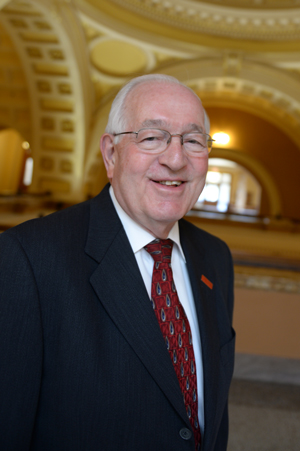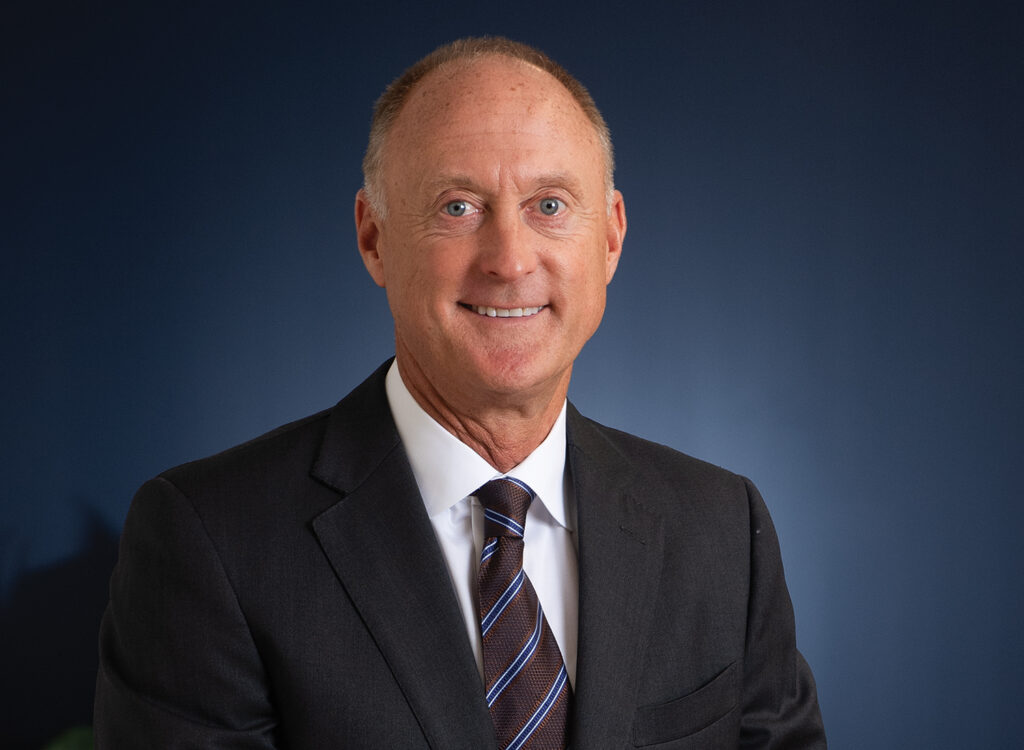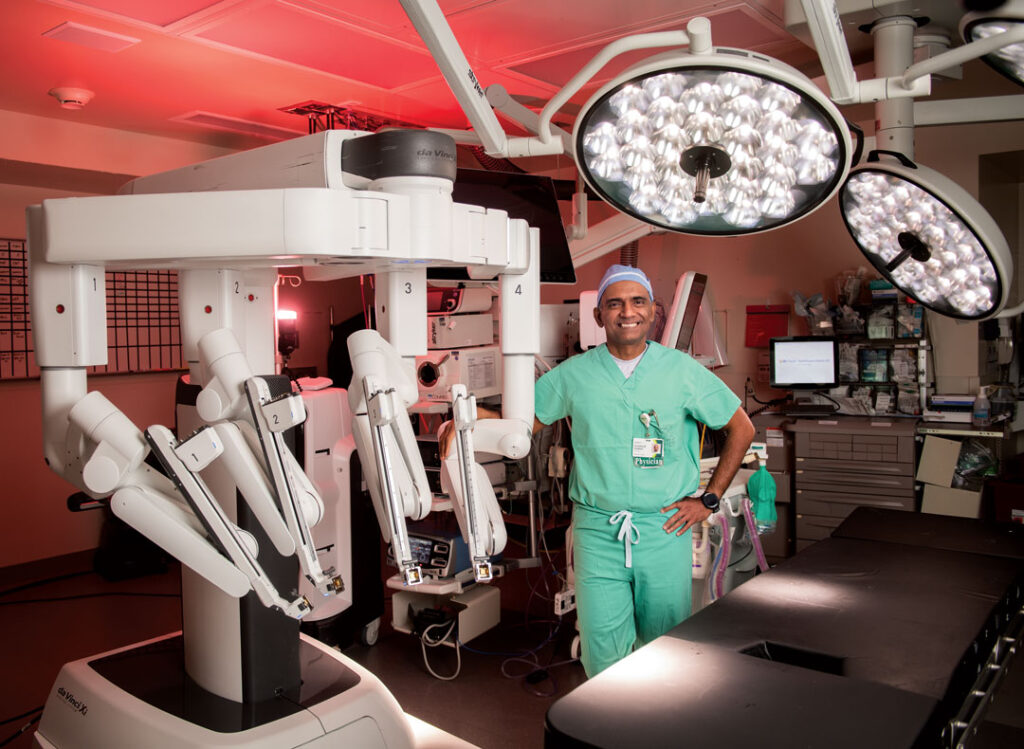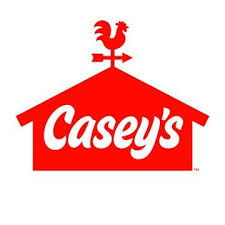That’s a wrap!: Business and finance guru Madden winds up 50 years at ISU

Even in stable Iowa, where the likes of Gov. Terry Branstad and former Iowa State University basketball coach and hometown hero Fred Hoiberg have discovered you really can come home, Warren Madden’s tenure at Iowa State University is newsworthy for its sheer longevity.
But the 76-year-old’s June 30 retirement as senior vice president for business and finance will be news for many reasons beyond the 50 years he’s been on the staff — every bit of it in the business and finance arena.
Madden watched the school’s enrollment boom. He saw Clyde Williams Field give way to recently expanded Jack Trice Stadium. He witnessed the school’s high-profile Veishea celebration as it morphed from an educational open house with cherry pies, a parade and beer to a riot-marred display of adrenaline, fire-setting and drunken confrontation that eventually was canceled permanently.
This is a man whose inner core is so cardinal and gold that he and his wife may be the only people in Cyclone Nation to have “campaniled” (it involves kissing as bells sound at midnight) both at the top and bottom of the iconic structure that holds the university’s famed carillon, which he even got to play. (When you are in charge of campus facilities, there are perks, he explains.)
Madden guided the construction of dozens of buildings. He managed, and then sold, under orders, the university’s television station, a highly controversial move.
“We invested the proceeds in an endowment,” Madden said. “In my judgment, today things are better off taking the income from the endowment to support things. The students who are in the television program now go out for internships in Iowa and elsewhere. I think that is probably a better experience.”
When the ornate dome of Beardshear Hall needed some gold leaf paint — something taxpayers might squawk about — Madden and his wife donated the pound of gold needed for the work.
Madden has worked for seven permanent and interim presidents — eight if you count his work as a student — and his tenure spans nearly a third of the land-grant university’s history. ISU President Steven Leath will reorganize the administrative staff when Madden leaves — replacing him with two people.
He is not flashy. In many ways, Madden has been the stable force in the middle of things as ISU grew from 8,000 students when he joined the staff to 36,000 now. After years of being slightly smaller than the University of Iowa, ISU now is the state’s largest university.
His reputation in Beardshear Hall is one of collaboration, humility and a matter-of-fact approach. Many consider him the main institutional memory.
What memories he must have. He toiled through the days of Don Smith, who changed his name to Zaid Abdul-Aziz in 1976 and played in the NBA for 10 years. He watched Fred Hoiberg make the trek to the NBA, then come back to Ames to coach his beloved Cyclones. He was on the staff when Dan Gable lost exactly one college wrestling match — in the NCAA final.
Perhaps more important, he was there in 2011 when Dan Shechtman, an Iowa State professor of materials science and engineering, won the Nobel Prize in chemistry. He watched as author Jane Smiley mocked higher education in general and unnamed muses at ISU in particular in the novel “Moo.” He has seen thousands upon thousands of future scientists, engineers, journalists, businesspeople, computer scientists, veterinarians, writers, and other aspiring professionals cross the commencement stage.
That is, after he crossed it himself.
Madden came to ISU as an industrial engineering student in 1957 and graduated in 1961. He worked for 3M in the Twin Cities, Philadelphia and Chicago, where he started a large tape-manufacturing plant.
“I have told people that now as a university administrator I not only know how to work with red tape, I literally made it.”
Madden had been a student when Wayne Moore taught in the engineering college. When Moore ascended to vice president for business, he lured Madden back to Ames to help out. By then, Madden had completed a graduate business administration degree at the University of Chicago.
Madden joined the ISU staff in 1966, and became vice president for business and finance in 1984.
“We came back in 1966 with the idea of staying a couple of years,” Madden recalled. “Bev got her graduate degree and taught in food and nutrition and coordinated all of the university’s placement programs until she retired. Those two years have turned into 50.”
Madden and Moore teamed up on many things, including the creation of the ISU Research Park, which has attracted diverse tech companies and now is expanding.
Madden started out managing grants, then worked through a succession of administrative positions that included acting as treasurer. In 1984, President Robert W. Parks named him vice president, handling business and finance. Current President Steven Leath changed the position to senior vice president for business and finance. Madden’s salary rose beyond $300,000.
We asked Madden a few questions in a Beardshear Hall meeting room, during a tour of the renovated building, and while he paused for photos on the grand steps that face central campus.
How has the business of running a land-grant university changed in the past half-century?
It’s become more business-focused. The enrollments have gone from 8,000 to 36,000 last year. The budget has gone from $200 million to $1.4 billion. Two-thirds of the campus buildings have been constructed in my time at Iowa State.
How has the work on capital improvements changed?
Iowa State is a more complex institution now, and that’s part of the reason I stayed. I have had opportunities to leave and have elected to stay. I have had the chance to work in all kinds of different areas. Iowa State does a lot of teaching research and outreach. The five permanent presidents I’ve worked for and with, and two interim presidents, have all given me the latitude in a broad variety of administrative areas. I have enjoyed that. Most of my days don’t end up the way you think they are going to be. The regulatory world has changed greatly. We’ve gone from relatively little federal and state oversight to a very complicated environment. (He later mentioned that this year’s conversations have included how to designate restrooms and how many lactation centers to provide.)
We are a community. On any given day there are 40,000 people who come and go from campus. We are a small city. In my role, I’m kind of the city manager for what goes on out here. I have to worry about streets and roads and power plants and financial systems and getting 14,000 people paid every month. That includes student workers.
(Madden is involved in the planning, construction and operation of buildings. He has a hand in the university’s power plant that burns coal and, now more than before, natural gas.)
What is the most significant change on the campus since you joined the staff?
(ISU President James H.) Hilton’s vision of creating the Iowa State Center probably changed Iowa State as much as anything. We moved from being a college to being a major university. (He later added that the addition of Jack Trice Stadium, the veterinary medicine complex and the ISU Alumni Center were important, too.)
What is occupying you in these last days?
As I get to the end of this career, we are looking at major renovations of the College of Veterinary Medicine. The next major capital priority of the university is a $120 million veterinary diagnostic lab out there (south of the Iowa State Center).
My people and programs are dealing with issues like, can you fly drones on campus? People are wanting to parachute. We are managing the athletic enterprise.
What do you do outside of work?
We travel. I like to bike in Europe. I swim in our pool at home. We have five acres (south of campus) with a garden.










